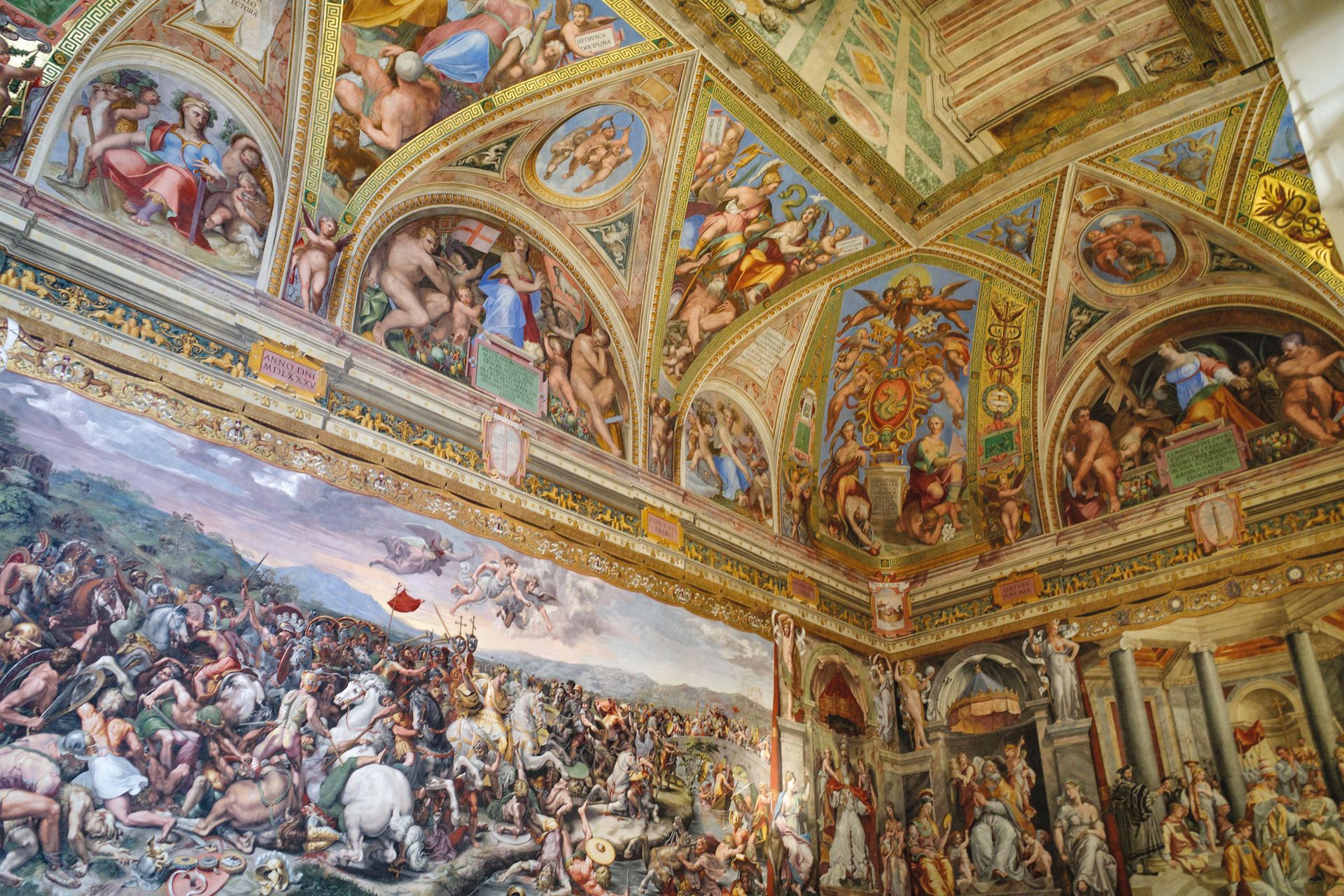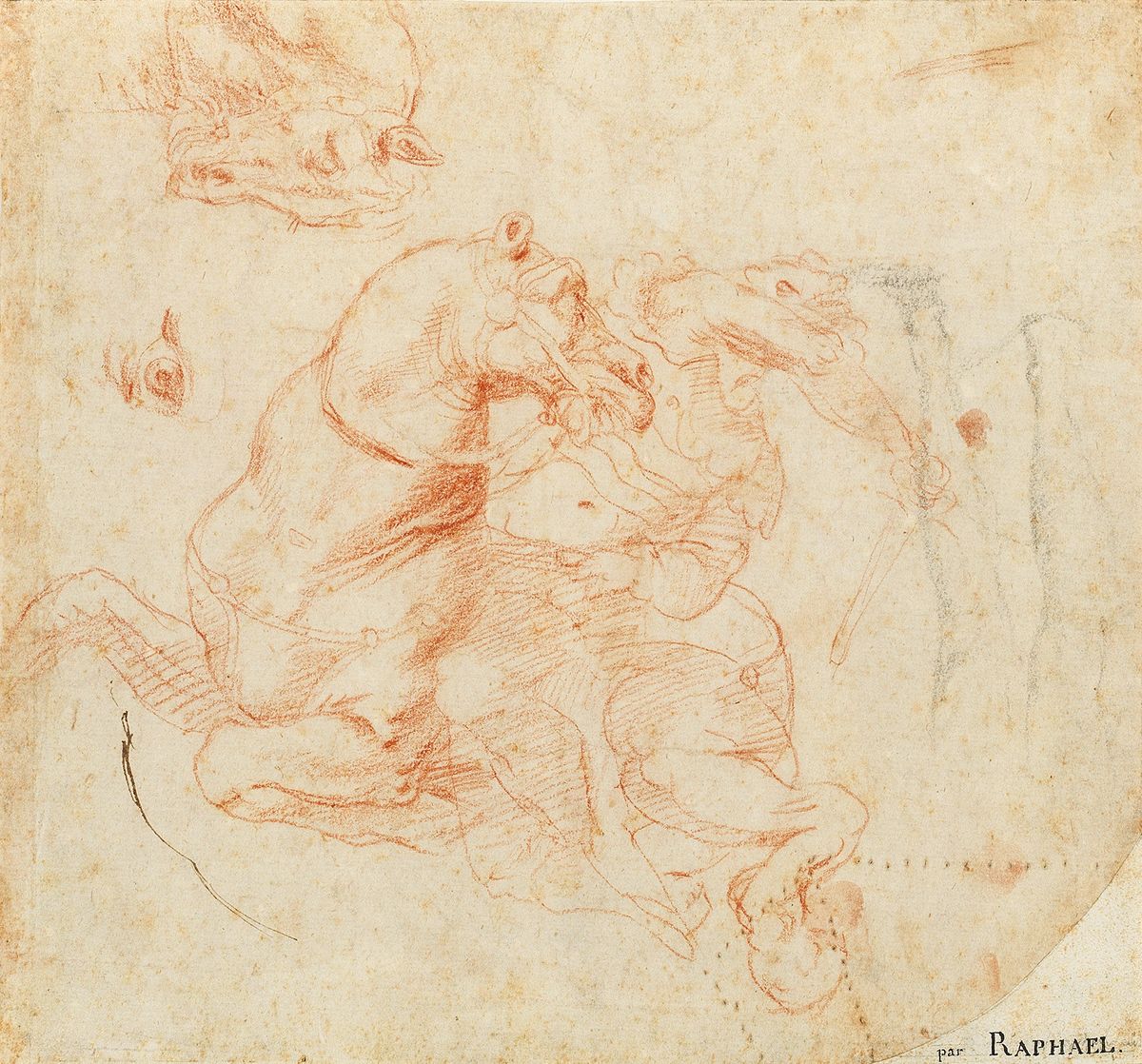Dorotheum auction house in Vienna is offering a work on paper identified as a late drawing by Raphael next month (25 October). The drawing in red chalk of a horse and rider by the Italian Old Master, Study for the Battle of the Milvian Bridge, has an estimate of €400,000 to €600,000.
On the back of the sheet are drawings by Raphael’s assistant, Polidoro da Caravaggio, which were probably executed later. Dorotheum says that Paul Joannides, an emeritus professor of history of art at Cambridge University, has endorsed the attributions for both Raphael and Polidoro da Caravaggio.
The Raphael drawing is a preparatory study for a section of the Battle of the Milvian Bridge fresco in the Hall of Constantine at the Vatican. Raphael did not live to see the completion of the work—he died in 1520—but his student Giulio Romano finished the painting. “The [Raphael] study is especially significant due to its role within one of the most ambitious artistic projects of the 16th century: the decoration of the papal apartments [of which the Hall of Constantine are a part] in the Vatican,” a statement from Dorotheum says.

The Hall of Constantine at the Vatican, with Battle of the Milvian Bridge, by Giulio Romano to Raphael's design, visible at bottom left
© Mark Green/Alamy Stock Photo
“Compositional and stylistic details confirm that this is a preparatory study by Raphael for the celebrated fresco,” said Mark MacDonnell, Dorotheum’s Old Master specialist, in a statement. “It has an energy, a verve, a movement, and a quality which make this sheet an outstanding rarity.”
According to Dorotheum, the double-sided work was in a private collection in France until the 1930s when it was probably acquired by the scholar and collector Iohan Quirijn van Regteren Altena. In 1940 he published both drawings in the UK-based The Burlington Magazine, attributing the works to Peter Paul Rubens. The work was sold at Christie’s Paris in 2015 (described as Italian school, 16th century) when it was acquired by the present owner.
Earlier this year, Old Master experts questioned a painting that was newly attributed to Raphael via an artificial intelligence programme. In January research teams from the University of Bradford and the University of Nottingham said that they had used new facial recognition technology to examine the de Brécy Tondo, comparing the faces in the work to those in the Sistine Madonna.


